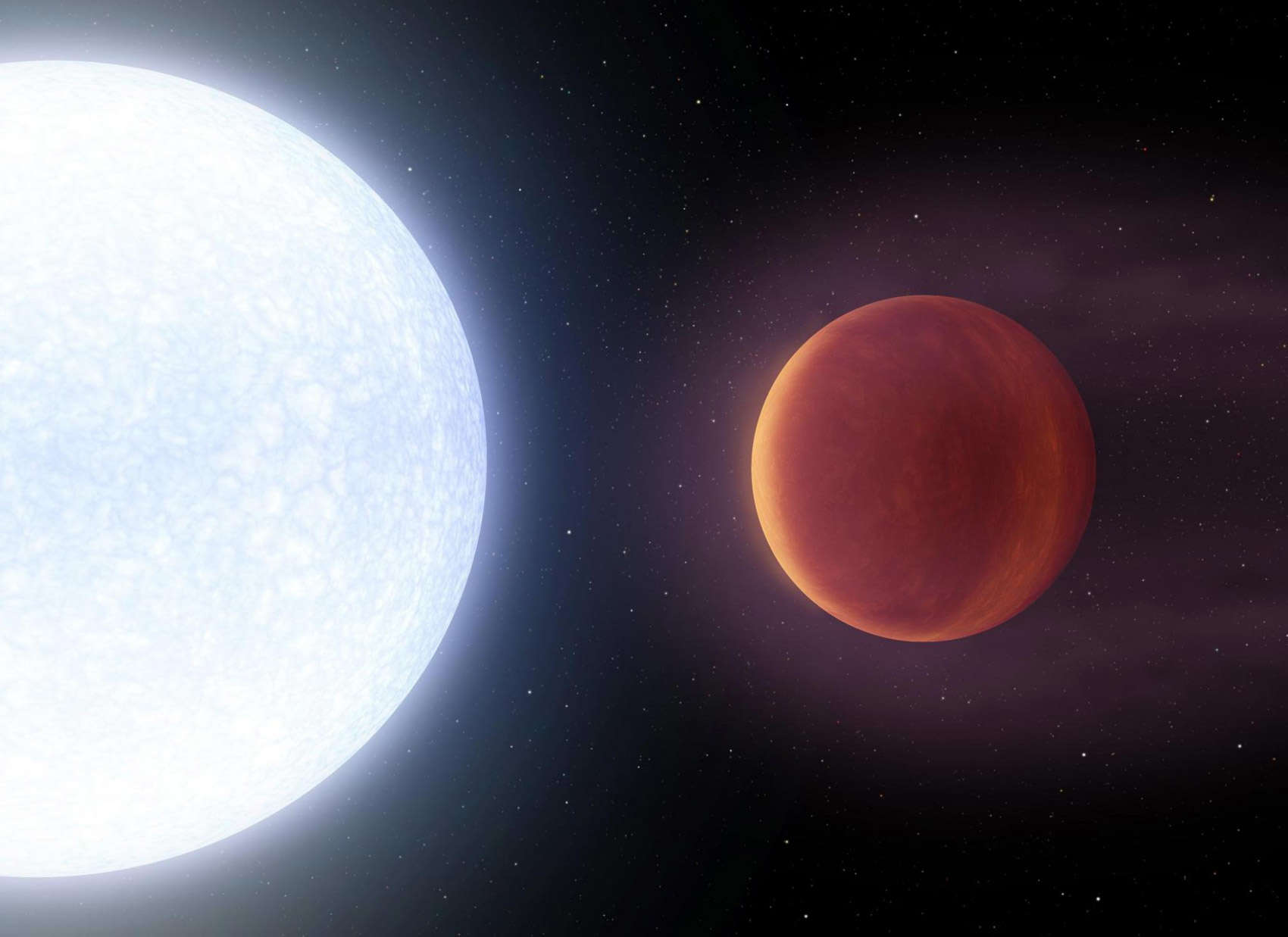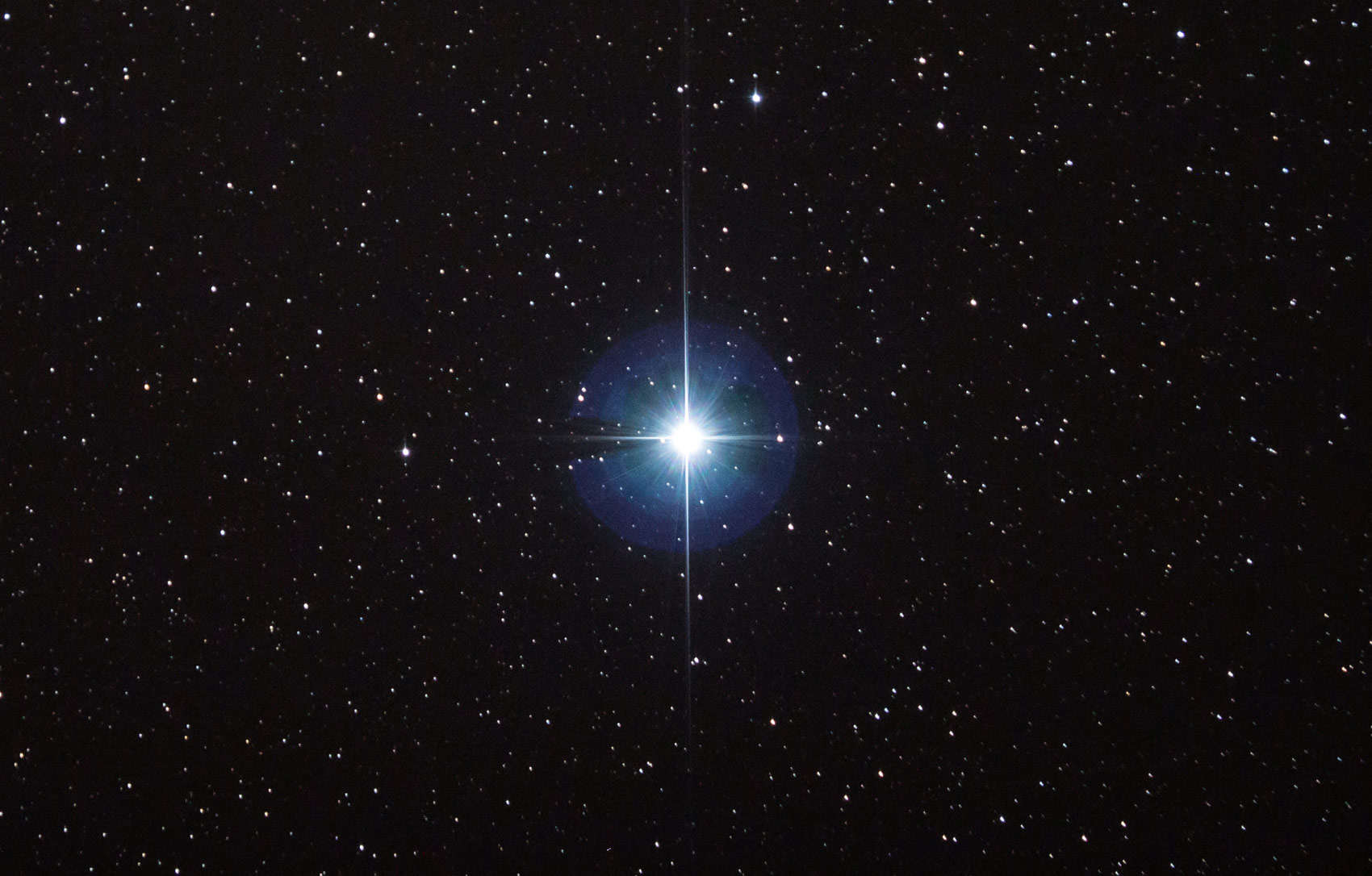Create a free profile to get unlimited access to exclusive videos, sweepstakes, and more!
A planet for Vega?

Vega is arguably one of the prettiest stars in the night sky. Brilliant and blue, it's the sparkling sapphire that marks the constellation Lyra high in the northern sky. It's one of the brightest stars in the sky, due to it being close to us, just 25 light years away, and intrinsically luminous, pouring out 40 times more energy than the Sun.
And a paper that's just come out indicates it might — might — have a planet orbiting it. If so, that's pretty interesting, and not just because we can send Jodie Foster there to check it out. For one thing, very few planets have been found around stars like it. For another, it would be incredibly hot, the second hottest planet ever found and hotter than some stars.
Vega is what's called an A-type star, about twice the mass and size of the Sun. It's young, probably less than 700 million years old (the Sun is 4.6 billion), and known to rotate rapidly. In fact, it spins so quickly that it's flattened, probably about ten percent wider through its equator than through its poles. By happenstance we see it very nearly pole-on, straight down its rotation axis. That's important, which I'll get to in a sec.
The astronomers who published the paper* used archival observations of Vega, over 1500 spectra taken across a ten-year span. A spectrum measures how bright an object is versus wavelength (color), and can tell you a vast amount about the star including its temperature, mass, spin, chemical composition, age, and even if it has planets under some circumstances.
Much of their work was focused on looking at the star itself, investigating surface activity like sunspots. But these same spectra can be used to look for planets. While it's fair to say in general that a planet orbits its star, it's more accurate to say they both orbit their center of mass, what astronomers call the barycenter. The planet makes a wide orbit and the star makes a little one, and the ratio of the orbit sizes is proportional to the ratio of their masses.
The star's motion is sometimes betrayed by a periodic Doppler shift in the light, which can be detected in a spectrum. This method, called the reflex velocity method, works best when the planet is massive and the star small, because the star's motion is maximized that way. Vega is a massive star, so this method is more difficult.
Also, the Doppler shift occurs when the star moves toward and away from us as it circles the barycenter, so the effect is maximized if we see the planet's orbit nearly edge-on. As I noted before, we are looking very nearly down Vega's spin pole, so this effect is minimized. That's frustrating.
Still, looking at all the data, they found a weak signal. It appears to have a period of 2.43 days. They calculate a false alarm probability of 1%, meaning there's a 99% chance this is not a false alarm. Still, the signal is weak enough that they cannot firmly say if it's real or not.
But if it is real, then it could be due to a planet orbiting Vega. It would have a minimum mass of 20 times Earth's and very likely much more. That would make it a gas giant, and with an orbit that fast it would have be close to Vega. Being close to a star that clocks in at 10,000°C means the planet itself would probably be around 3,000°C! That's hotter than many red dwarf stars, and second only to the planet KELT-9b, which is probably around 3,800°C. If it is a gas giant, that heat would puff it up considerably, so even if it has a mass of Neptune or so it may be as big as Jupiter.
Mind you, to be clear, there may not be a planet. This sort of analysis is very tricky with a star like Vega, and the team was very careful to point out they cannot be conclusive. If it is real that would be very cool, though. Only a handful of planets have been found around stars as massive or more than Vega, so every one we find helps us understand them better.
Also, Vega is known to have a huge disk of dust orbiting it. That disk has a sharp inner edge about ten billion kilometers out, and extends out to about 30 billion km. It may be due to asteroids colliding with each other, and that inner edge may be cut off due to the gravity of big planets orbiting closer in sweeping up the dust. So there's already some indirect evidence of a planetary system orbiting Vega.
Confirming or negating this planet won't be easy, and will take a lot more observations using instruments specifically designed to look for planetary signals. I'd love for it to be real, but we have to go where the data point us. Hopefully, it'll point toward planets.
Either way, it makes me want to watch Contact again.
*I'll note the lead author, Spencer Hurt, is an undergraduate! He's part of the Astrophysical & Planetary Sciences at the University of Colorado. When I was an undergrad studying astronomy I could certainly point a telescope at Vega, but this sort of work would've been — haha — over my head. So I'm impressed.



























